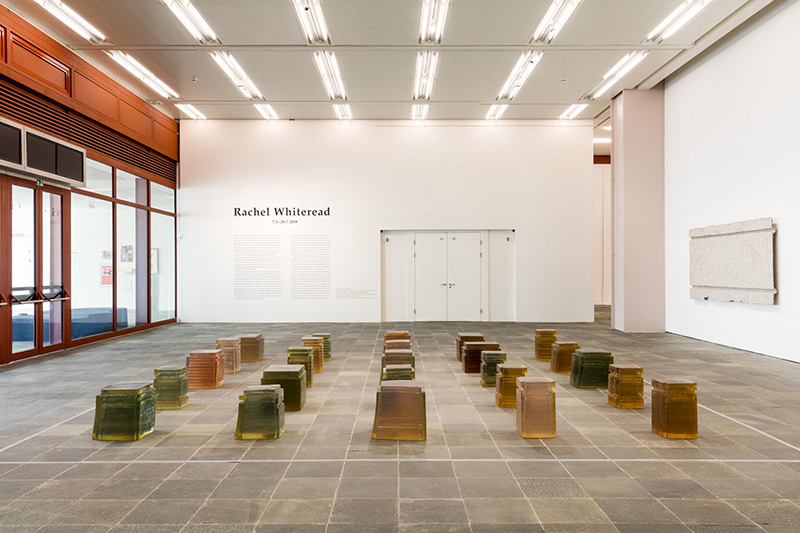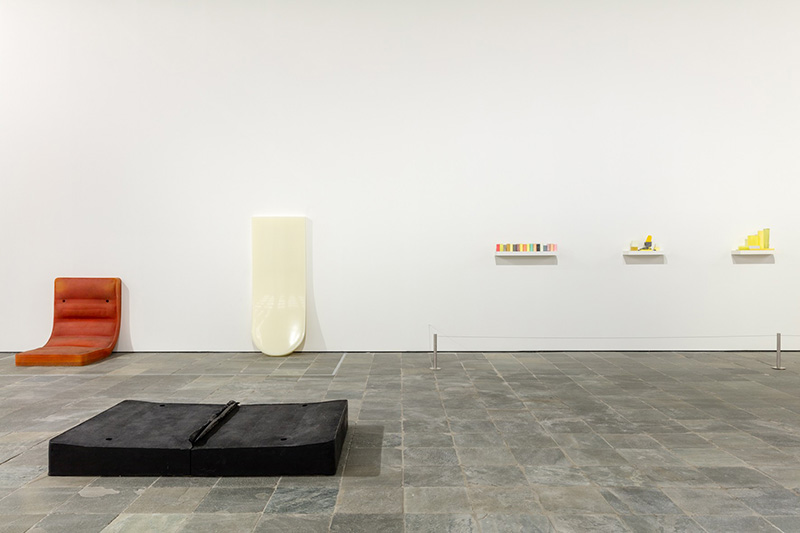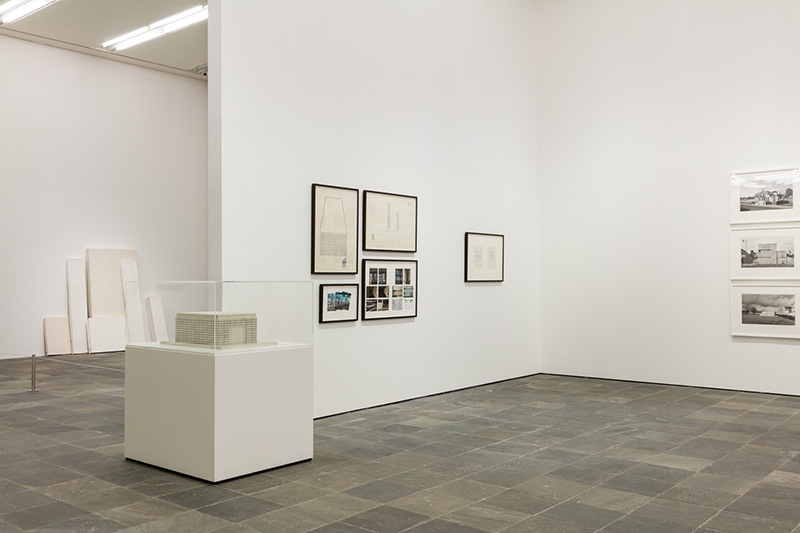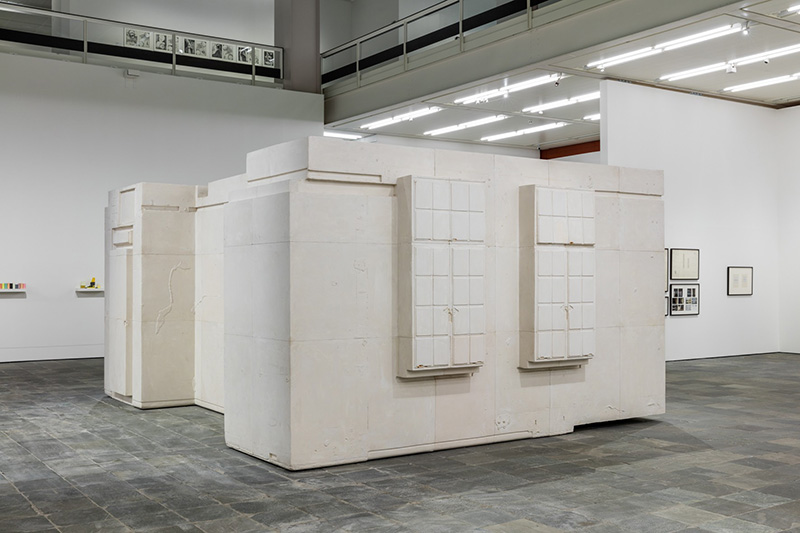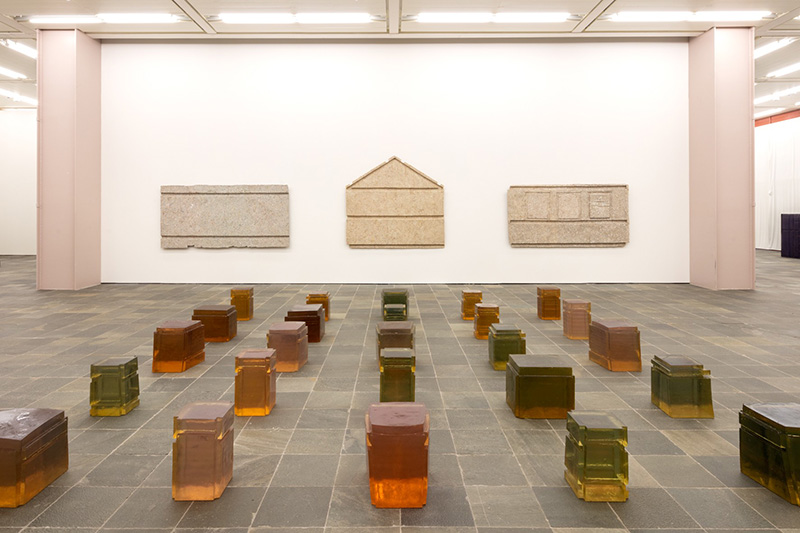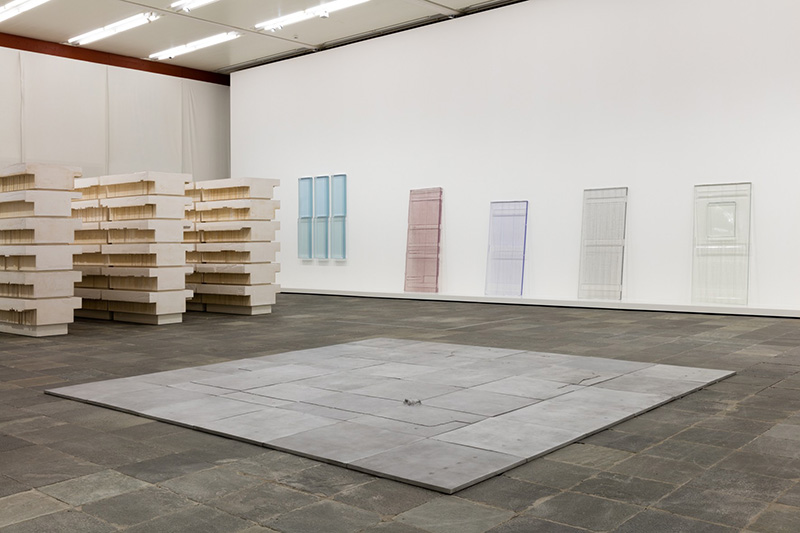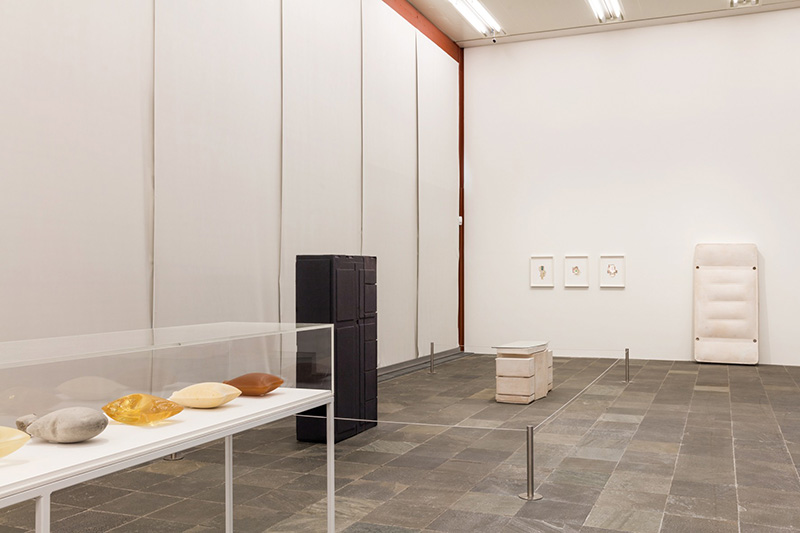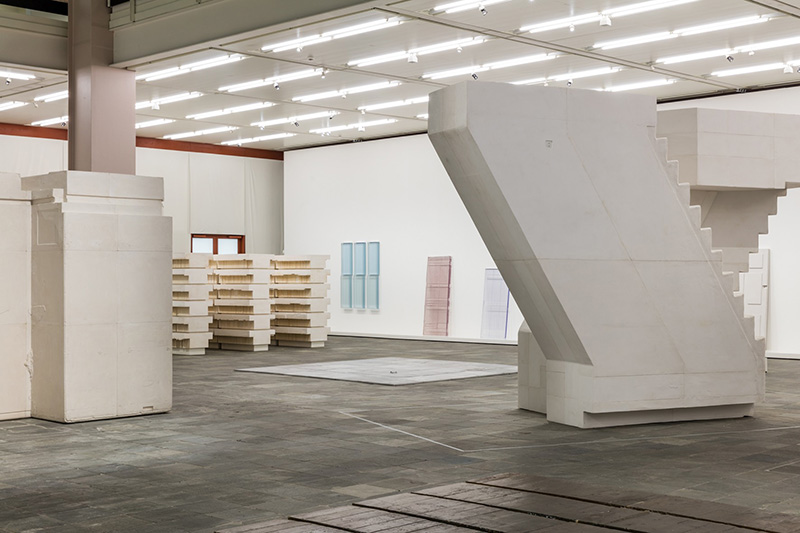ART-TRIBUTE:Rachel Whiteread,Part II
 Rachel Whiteread’s approach to sculpture is predicated on the translation of negative space into solid form. Casting from everyday objects, oftentimes using spaces around or within furniture and architecture, she uses materials such as rubber, dental plaster, and resin to capture every nuance. She was the first woman to win the annual Turner Prize in 1993 and represented the UK at the 1997 Venice Biennale (Part I).
Rachel Whiteread’s approach to sculpture is predicated on the translation of negative space into solid form. Casting from everyday objects, oftentimes using spaces around or within furniture and architecture, she uses materials such as rubber, dental plaster, and resin to capture every nuance. She was the first woman to win the annual Turner Prize in 1993 and represented the UK at the 1997 Venice Biennale (Part I).
By Efi Michalarou
Photo: Belvedere 21 Arhive
For the first time in Vienna is on presentation a Rachel Whiteread’s Retrospective at the Belvedere 21. In Vienna Rachel Whiteread is best known for her “Holocaust Memorial” on the Judenplatz, with which the British artist has had a lasting effect on the city and changed the discourse about the past. Featuring 70 works, the exhibition ranges from her early casts of hot water bottles, furniture and architectural elements to her latest reliefs made from papier mâché. The main focus of the exhibition is the “Holocaust Memorial” known in German under the title “Memorial to the Jewish Victims of the Shoah in Austria”, which was revealed on Vienna’s Judenplatz in the year 2000. The Holocaust Memorial in Vienna was game-changing for Whiteread’s further development as an artist. Whiteread’s “Torsos” are made by pouring materials such as resin, plaster, aluminium leaf, wax, concrete or rubber into a hot water bottle or a similarly shaped object and then removing the outer cast from the set material. This results in small and physically unassuming sculptures that nevertheless have an enormous emotional resonance, as a reminder of their original function. The “Torsos” have been produced since 1988, although while at art school Whiteread was already experimenting with such objects. The creased lines and bulbous shape of the “Torsos” lend them an almost human quality, and the artist has described them as her “Headless, limbless babies”. Alongside the public projects Whiteread was engaged with around the turn of the 21st Century she also turned to making work from her own domestic environment, a former textile warehouse and previously synagogue in East London. Before she and her family moved their home and studios into the building, she began the process of casting its interior. A number of key works were developed during this time including “Untitled (Stairs)” 2001. Whiteread was particularly drawn to the stairs and floors of the building, the spaces which experience the hardest use and which, in their worn patches, scratches and chips, bear witness to the comings and goings of daily life. In capturing these physical marks the artist was able to commemorate the former residents of the building, and some of the many waves of immigration upon which London is built. “Untitled (Room 101)” is a centrepiece of the exhibition. It is a cast of the room 101 in the BBC’s former Broadcasting House, which is believed to be the model for George Orwell’s “Room 101”’, the torture chamber in his dystopian novel 1984, a warning about totalitarianism and the loss of humanity that is extremely topical today. “LOOK, LOOK, LOOK” (2012), Whiteread has always been concerned with the fabric of buildings, and particularly of their interior features and fixtures such as sinks and baths, light switches and door handles, all of which she has cast. She began casting the surfaces of doors to make sculpture in 2004, and later windows, first in opaque materials such as plaster, and then in a range of colored resins. The doors are exhibited leaning against walls on the floor and the windows are secured to gallery walls at roughly the height of a domestic window. The range of original subjects is varied; some doors and windows are clearly from older buildings, while others appear to be derived from newer, more modern architectural features. Such a re-imagining of this range of forms in their cast versions, as sculpture, emphasises their details and our relationship with the structures that surround us. Milestones in Whiteread’s career such as “Closet” and “Mantle” (both 1988) as well as “Untitled (Twenty-five spaces)” from 1995 will be on display. Rachel Whiteread has worked for a number of years on a series of huts and houses typically found in remote and difficult-to-access locations. One of these works cast in concrete, titled “Chicken Shed” was made especially for this retrospective and depicts a small chicken shed that originally stood in the English county of Norfolk. The surface of the cast concrete even contains recognizable details from the hand-sawn wood used to construct the shed.
Info: Belvedere 21, Arsenalstrasse 1, Vienna, Duration: 7/3-29/7/18, Days & Hours: Wed & Fri 11:00-21:00, Thu & Sat-Sun 11:00-18:00, www.belvedere21.at
